This pub is closed permanently. Your nearest Wetherspoon pub: The King’s Ford
This is the former central post office, built in the inter-war years to serve the fast-growing town of Loughton.
A photograph and text about Loughton Post Office.
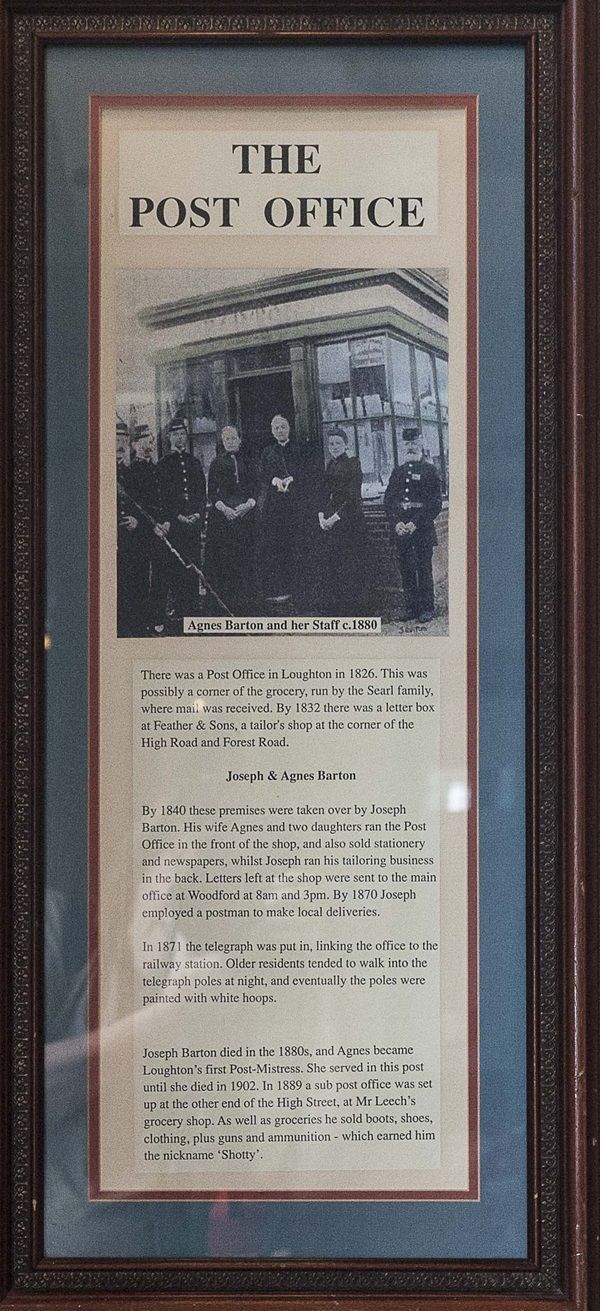
The text reads: There was a post office in Loughton in 1826. This was possibly a corner of the grocery, run by the Searl family, where mail was received. By 1832 there was a letter box at Feather & Sons, a tailor’s shop at the corner of the High Road and Forest Road.
By 1840 these premises were taken over by Joseph Barton. His wife Agnes and two daughters ran the post office in the front of the shop, and also sold stationery and newspapers, whilst Joseph ran his tailoring business in the back. Letters left at the shop were sent to the main office at Woodford at 8am and 3pm. By 1870 Joseph employed a postman to make local deliveries.
In 1871 the office to the railway station. Older residents tend to walk into the telegraph poles at night; eventually the poles were painted with white hoops.
Joseph Barton died in the1880s, and Agnes became Loughton’s first post-mistress. She served in this post until she died in 1902. In 1889 a sub post office was set up at the other end of the High Street, at Mr Leech’s grocery shop. As well as groceries he sold boot, shoes, clothing, plus guns and ammunition – which earned him the nickname ‘Shotty’.
Prints and text about Mary Anne Clarke.
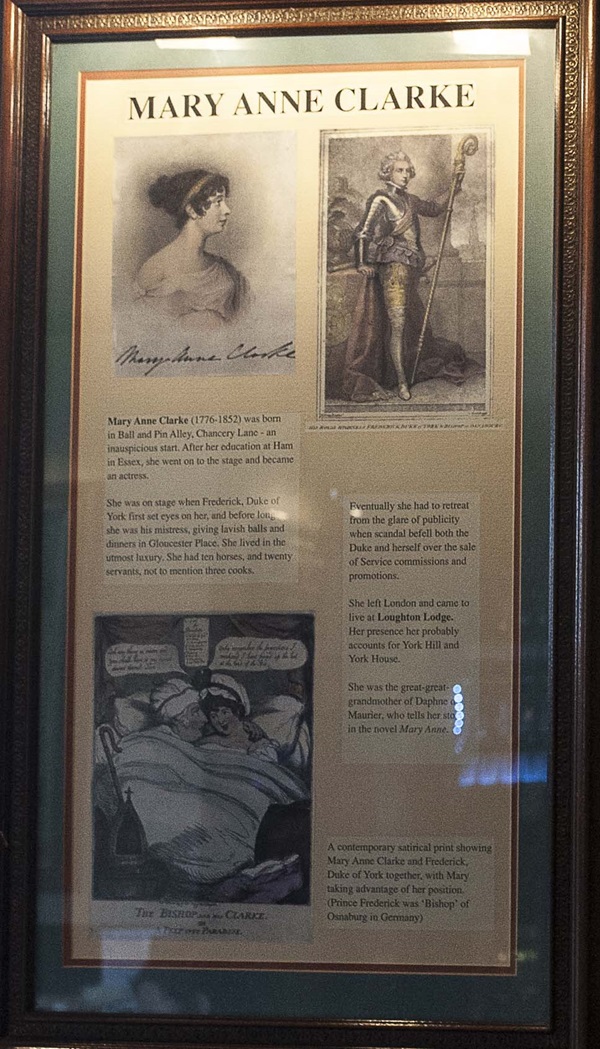
The text reads: Mary Anne Clark (1776-1852) was born in Ball and Pin Alley, Chancery Lane – an inauspicious start. After her education at Ham in Essex, she went on to the stage and became an actress.
She was on stage when Frederick, Duke of York first set eyes on her, and before long she was his mistress, giving lavish balls and dinners in Gloucester Place. She lived in the utmost luxury. She had ten horses, and twenty servants not to mention three cooks.
Eventually she had to retreat from the glare of publicity when scandal befell both the Duke and herself over the sale of service commissions and promotions.
She left London and came to live at Loughton Lodge. Her presence here probably accounts for York Hill and York House.
She was the great-great-grandmother of Daphine of Maurier, who tells her story in the novel Mary Anne.
A contemporary satirical print showing Mary Anne Clarke and Frederick, Duke of York together, with Mary taking advantage of her position. (Prince Frederick was ‘Bishop’ of Osnaburg in Germany).
Illustrations and text about Lopping Rights.
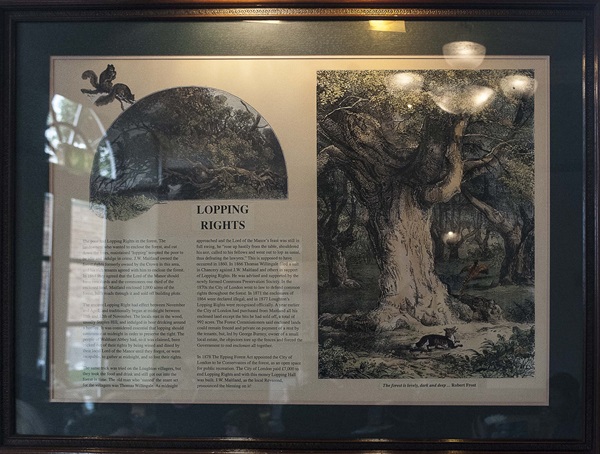
The text reads; The poor Lopping Rights in the forest. The landowners who wanted to enclose the forest and cut down the trees, maintained ‘lopping’ tempted the poor to be idle and indulge in crime. JW Maitland owned the forest rights formerly owned by the Crown in this area, and his rich tenants agreed with him to enclose the forest. In 1864 they agreed that the Lord of the Manor should have two thirds and the commoners’ one third of the enclosed land, Maitland enclosed 1,000 acres of the forest, built roads through it and sold off building plots.
The ancient Lopping Right had effect between November and April, and traditionally began at midnight between 11 and 12 of November. The locals met in the wood, usually Staples Hill, and indulged in beer drinking around a bonfire. It was considered essential that lopping should commence at midnight in order to preserve the right. The people of Waltham Abbey had, so it was claimed, been tricked out of their rights by being wined and dined by their local Lord of the Manor until they forgot, or were incapable, to gather at midnight, and so lost their rights.
The same trick was tried on the Loughton villagers, but they took the food and drink and still go out into the forest in time. The old man who ‘sussed’ the snare set for villagers as Thomas Willingale. As Midnight approached and the Lord of the Manor’s feast was still in full swing, he ‘rose up hastily from the table, shouldered his axe, called to his fellows and went out to lop as usual, thus defeating the lawyers.’ This is supposed to have occurred in 1860. In 1866 Thomas Willingale filed a suit in Chancery against JW Maitland and others in supported by the newly formed Commons Preservation Society. In the 1870s the City of London went to law to defend common rights thought out the forest. In 1871 the enclosures of 1864 were declared illegal, and in 1877 Loughton’s Lopping Rights were recognised officially. A year earlier the City of London had purchased from Maitland all his enclosed land except the bits he had sold off, a total of 992 acres. The Forest Commissioners said enclosed lands could remain fenced and private on payment of a rent by the tenants, but led by George Burney, owner of a small local estate, the objectors tore up the fences and forced the Government to end enclosure all together.
In 1878 The Epping Forest Act appointed the City of London to be Conservators of the forest, as an open space for public recreation. The City of London to be Conservators of the forest, as an open space for public recreation. The City of London paid £7,000 to end Lopping Rights and with this money Lopping Hall was built. J.W. Maitland, as the local Reverend, pronounced the blessing on it!
Prints and text about the history of ale and beer.
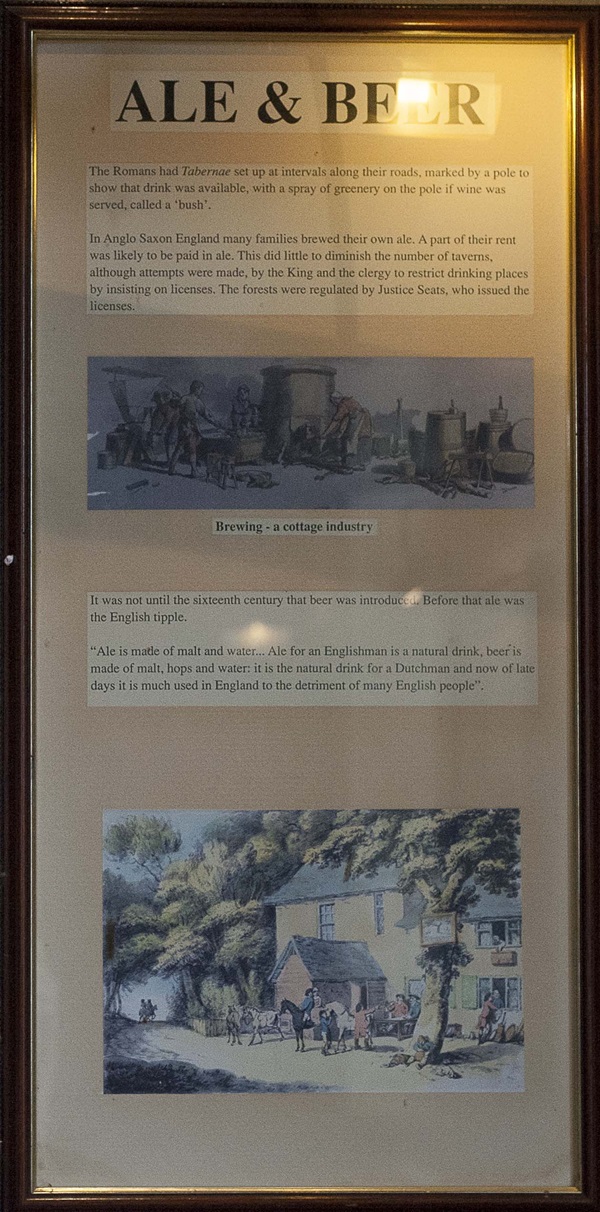
The text reads: The Romans had Tabernae set up at intervals along their roads, marked by a pole to show that drink was available, with a spray of greenery on the pole if wine was served, called a ‘bush’.
In Anglo Saxon England many families brewed their own ale. A part of their rent was likely to be paid in ale. This did little to diminish the number of taverns, although attempts were made, by the King and the clergy to restrict drinking places by insisting on licenses. The forests were regulated by Justice Seats, who issued the licenses.
It was not until the sixteenth century that beer was introduced. Before that ale was the English tipple.
“Ale is made of malt and water… Ale for an Englishman is a natural drink; beer is made of malt, hops and water: it is the natural drink for a Dutchman and now of late days it is much used in England to the detriment of many English people”.
A print and text about the history of inns and tea gardens.
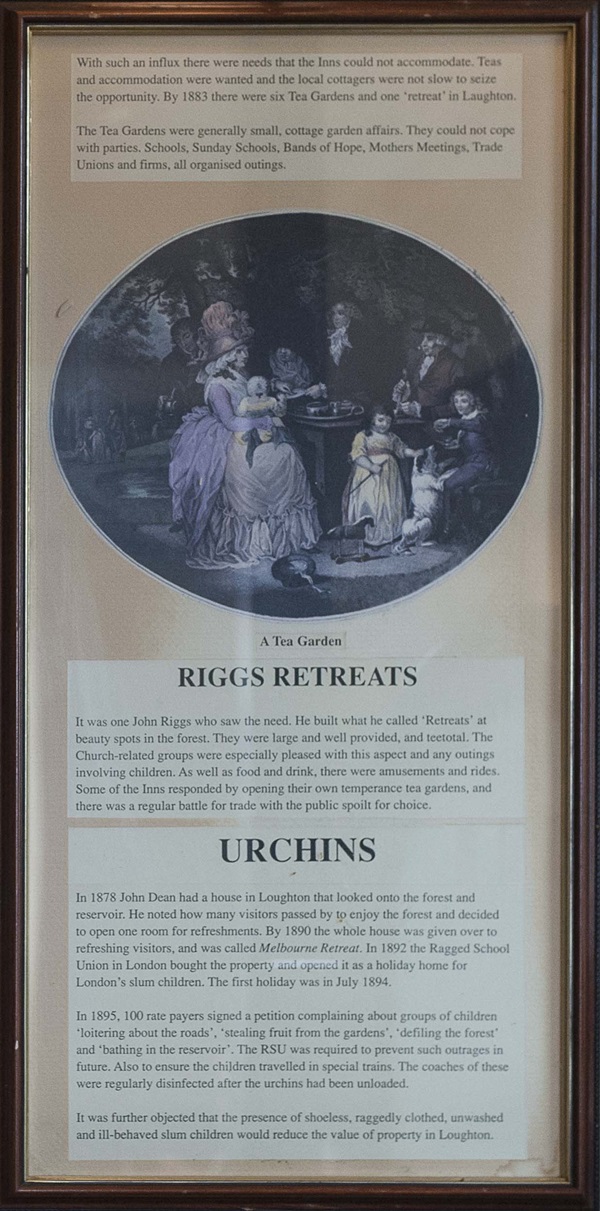
The text reads: With such an influx there were needs that the inns could not accommodate. Teas and accommodation were wanted and the local cottagers were not slow to seize the opportunity. By 1883 there were six Tea Gardens and one ‘retreat’ in Loughton.
The Tea Gardens were generally small, cottage garden affairs. They could not cope with parties. Schools, Sunday schools, bands of hope, mothers meetings, trade unions and firms, all organised outings.
It was one John Riggs who saw the need. He built what he called ‘Retreats’ at beauty spots in the forest. They were large and well provided, and teetotal. The church-related groups were especially pleased with this aspect and any outings involving children. As well as food and drink, there were amusements and rides. Some of the inns responded by opening their own temperance tea gardens, and there was a regular bottle for trade with the public spoilt for choice.
In 1878 John Dean had a house in Loughton that looked onto the forest and reservoir. He noted how many visitors passed by to enjoy the forest and decided to open one room for refreshments. By 1890 the whole house was given over to refreshing visitors, and was given over to refreshing visitors, and was called Melbourne Retreat. In 1892 the Ragged School Union in London bought the property and opened it as a holiday home for London’s slum children. The first holiday was July 1894.
In 1895, 100 rate payers signed a petition complaining about groups of children ‘loitering about the roads’, ‘stealing fruit from the gardens’, defiling the forest’ and ‘bathing in the reservoir’. The RSU was required to prevent such outrages in future. Also to ensure the children travelled in special trains. The coaches of these were regularly disinfected after the urchins had been unloaded.
It was further objected that the presence of shoeless, ragged clothed, unwashed and ill-behaved slum children would reduce the value of property in Loughton.
Postal inspired artwork.
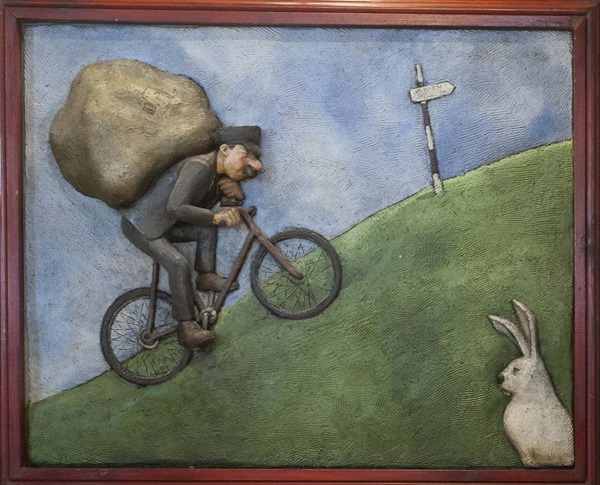
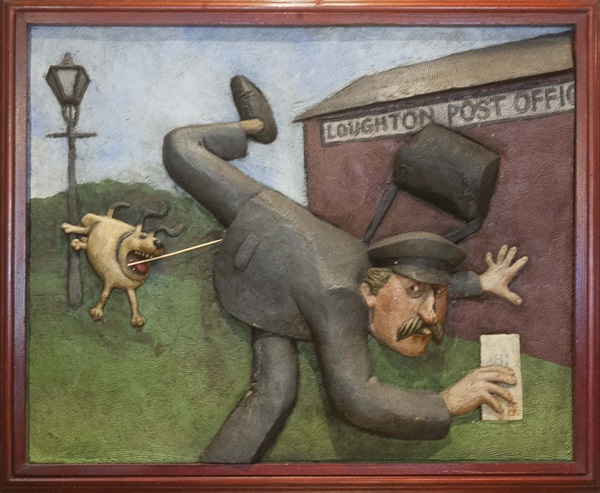
External photograph of the building – main entrance.
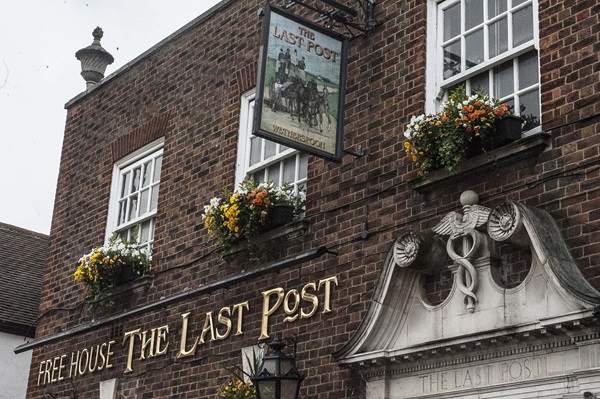
If you have information on the history of this pub, then we’d like you to share it with us. Please e-mail all information to: pubhistories@jdwetherspoon.co.uk